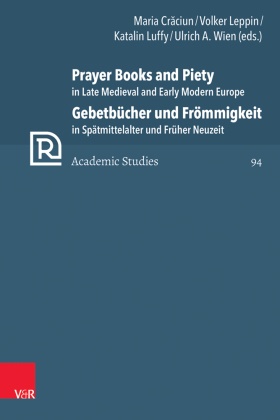
Prayer Books and Piety in Late Medieval and Early Modern Europe / Gebetbücher und Frömmigkeit in Spätmittelalter und Frü - Gebetbücher. Frömmigkeit und Andacht in Spätmittelalter und Früher Neuzeit
| Verlag | Vandenhoeck & Ruprecht |
| Auflage | 2023 |
| Seiten | 407 |
| Format | 15,8 x 3,2 x 23,7 cm |
| Gewicht | 787 g |
| Reihe | Refo500 Academic Studies (R5AS) Band 094 |
| ISBN-10 | 3525573456 |
| ISBN-13 | 9783525573457 |
| Bestell-Nr | 52557345A |
This volume brings together local and global to define the place of the written word in lay piety, highlighting continuities between medieval/Catholic and early modern/Protestant practice. Instead of focusing on individual prayer books, it places them within the broader genre of devotional literature and considers them in connection with prevailing cultural, religious and artistic developments, taking into account the Reformation, the printing press and growing interest in lay piety, in the context of increasing individualism, developing literacy, privatization and/or personalization of religion.
Religious texts of various literary genres reveal the transforming expressions of piety from medieval times to the early modern period.
This collected volume is dedicated to the role of prayer books in lay piety in medieval and early modern contexts. Instead of focusing on individual examples, it places them within the broader genre of devotional literature and considers them in connection with prevailing cultural, religious and artistic developments, taking into account the Reformation, the printing press and growing interest in lay piety, in the context of increasing individualism, developing literacy, privatization and/or personalization of religion. Contextualising devotional literature, the volume refines understandings of religious practice fostered by traditional Catholicism and early modern Protestantism and its relationship with the written word, locating the use of books within a devotional 'diet' that included oral recitation of prayers as well as contemplation of images. Stressing continuities, often against the grain of existing literature, this volume highlights differences between regional cultures of prayer in contrast to norms set by the universal Church and emphasizes the tension between public/communal and private/individual devotion.
